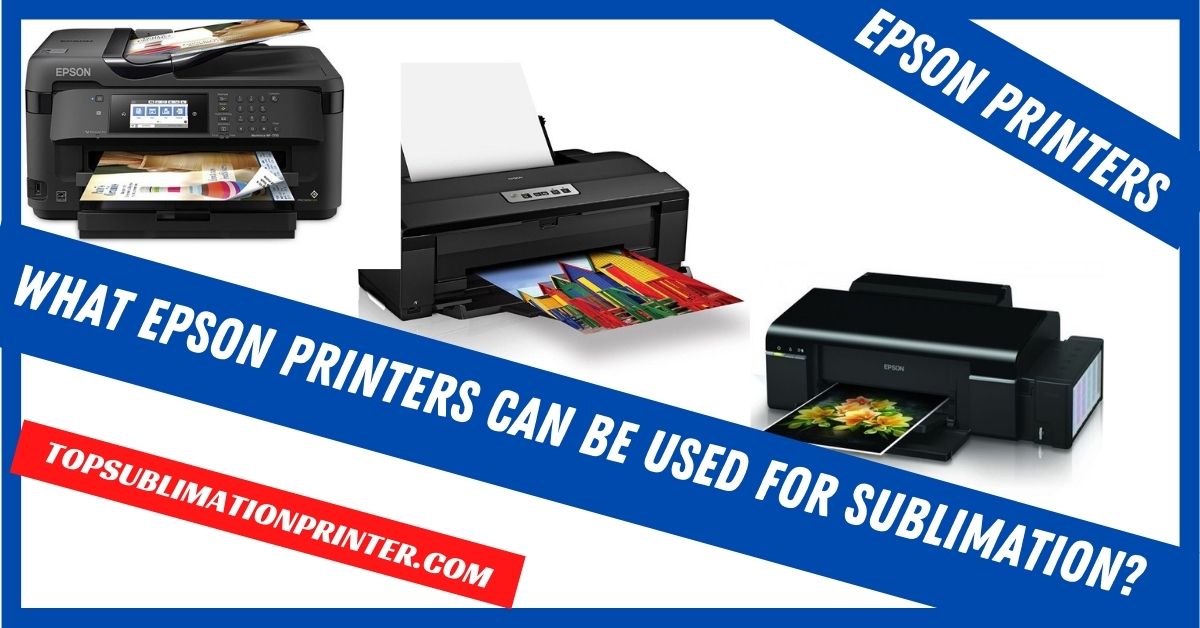Converting standard printers to sublimation printing is chaotic and often damaging. However, Epson is a brand suitable to perform sublimation with simple DIY. Premium features, sublimation compatibility, HD scans, and high-end printouts are essential for performing sublimation printing.
The selection of the right device is highly recommended for quality printouts. Some Epson printers are ready-to-sublimate printers, whereas some are convertible to sublimation printers. Below you will find answers to what Epson printer can be used for sublimation with vital requirements.
Requirements to Meet Sublimation Printing
Sublimation printing can transform graphics over versatile materials. The medium compatibility boosts the printers in the market, from soft fabric like cotton to rigid surfaces of ceramics. Epson performs optimal functions, and therefore we have enlisted some factors that you must have in a printer to use it for sublimation.
1. Versatile Format Compatible
For qualifying on the list, a printer must have versatile format compatibility. You must perform sublimation from mini structures like wristwatch dials, key chains, and pendants. At the same time, you also need to perform a graphic transformation on wide-format banners, drapes, and many other borderless mediums. Therefore, an Epson printer with borderless printing and variable sheet formatting is a perfect option.
2. Color Printer
Epson has a variety of printers that can only print in monochrome, but you need a color printer output for sublimation printing. In addition to color printing, you need a printer that can display the best color combination near to real. Moreover, water-resistant and non-bleeding colors are also essential for sublimation printers.
3. Sublimation Ink Compatibility
Not all Epson printers are sublimation compatible. In addition, the sublimation ink from Epson is the most reliable option. Usually, other brand inks or low-quality sublimation inks are not good to provide the best quality. Therefore, printers that can adjust the sublimation inks can perform sublimation tasks through Epson.
4. Print Heads
There are two types of print heads known as Thermal and Piezo. The thermal uses heat to form ink steam in a bubble, whereas the Piezo print head uses electric ions over the thin film to discharge the molecules. Both print heads are suitable for sublimation printing. Water-based inks are ideal for thermal and Eco-solvent; oil-based and gel-based inks are suitable for Piezo.
Why Should I Convert Epson Printer to Sublimation Printer?
Sublimation printers are hardly available in the market. Although the Epson brand has several ready-to-go sublimation printers, the availability and expense are why people opt for conversions. Further, the Epson brand printers are flexible and have margins for modifications. Therefore, converting the standard printer to sublimation is effective and efficient.
True Epson Sublimation Printers – Ready-to-GO
Instead of converted printers, the manufactured to sublimate are a far better option. The Epson-certified printers to perform the task with excellence have a better outcome. There are a few drawbacks to converting the Epson printers;
- Voids the Warranty.
- Often ink replacements cause permanent damage.
- Residual ink usually leaves marks on the printouts.
- Lacks technology to support the troubleshooting team.
- Often cause resource damage, including sheets, inks, and efforts.
- No data is available to tackle the existing issue.
Wrapping up
Concluding the discussions, I recommend opting for a true Epson Sublimation printer for your printing job. Especially if you are a beginner in the field, it has a reliable background and can easily outperform the task. Although it might cost you double the price at the end of the day. You can get help from customer support and also avail the facilities offered in the warranty policy.

